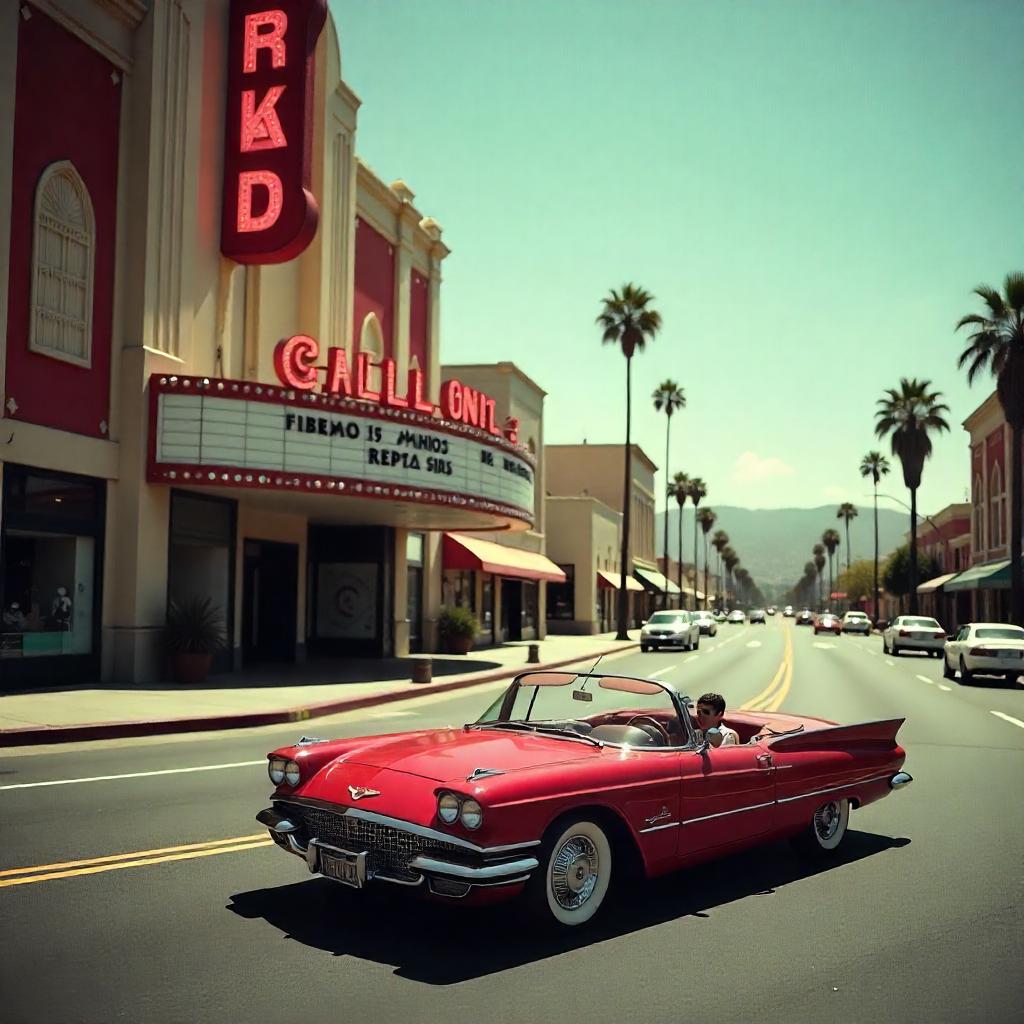In the shadows cast by the giant letters “HOLLYWOOD” on a barren hill outside Los Angeles, Thomas Harper Ince built the first standardized studio in 1915. This seemingly ordinary wooden factory building was in fact the first time-folding laboratory of mankind. When Griffith in the “Party of One” parallel editing of ancient Babylon and Wall Street, Hollywood has quietly time compression, spatial reorganization of the technical code written into the film gene. A hundred years of light and shadow flow, this dream factory in the desert, always in the gap between film and digital weaving the collective memory of mankind.
The Alchemy of Time and Space in the Age of Mechanical Reproduction
Under the mercury lights of the MGM studios, Fred Astaire and Ginger Rogers danced to the mechanical rhythm of 1/24th of a second. The studio system of Hollywood’s Golden Age was essentially a perfect replica of Fordism in the cultural realm: the screenwriting department dismantled story structures like an automobile assembly line, and the star system transformed individual charisma into a mass-producible commodity. This industrialized mode of production reaches its peak in Gone with the Wind’s Atlanta Burning – Selznick dispatches seven film crews at once, seamlessly connecting the real-life scenes of the burning with miniature models from different time periods.
Hitchcock’s invention of the sliding zoom lens in Vertigo exposed the magical nature of Hollywood’s manipulation of time and space. When James Stewart produces a moment of vertigo on a steep slope in San Francisco, the focal length change creates a false depth of field that is more psychologically oppressive than the real city streets. This visual deception technique completes its digital evolution in the “bullet time” of “The Matrix”: a circular array of 120 Nikon cameras solidifies Newton’s laws into an eternal paradox of motion.
Topological Reconstruction of Cultural Memory
The New York street sets of the Warner Brothers set replicate the urban soul of three thousand kilometers away with plaster facades. This Manhattan of equivocal acronyms is transfigured into a transit point for North African refugees in Casablanca and mutated into a cyberpunk city of 2019 in Blade Runner. Hollywood set designers are spatio-temporal topologists, using plywood and polystyrene foam to fold the history of human civilization into a library of material that can be accessed at will.
When the historical images in Forrest Gump were erased frame by frame from the crowd of actors around the protagonist, Hollywood demonstrated the dangerous power of memory remodeling. Digital retouching software can erase the cigarette in Humphrey Bogart’s hand or breathe new life into the late Peter Cushing in the Star Wars sequels. This kind of memory tampering is dramatized in the “time-jacking” episode of Avengers 4: the quantum field becomes the ultimate tool for rewriting history.
The Ghost of Film in the Digital Deluge
Nitrate film from Paramount’s vaults is slowly disintegrating in a thermostatic cellar, and those disappearing silver ion particles make up Hollywood’s dark matter universe. Christopher Nolan insisted on using IMAX cameras to capture the fire of live-action explosions, and this obsession with the film medium is just like a reverse pilgrimage in the digital flood. When Star Trek’s five-dimensional library of books presents the folds of space and time in a physical model, Nolan is reminding us that some dimensions of space and time can only be captured through a mechanical shutter.
In Disney’s virtual production studio, The Mandalorian’s giant LED screen renders alien landscapes in real time. This real-time engine technology transforms the spatial fragmentation of the green screen era into an immersive experience, but it is also creating a new spatio-temporal alienation. When deep learning algorithms can automatically generate the arc of Clark Gable’s smile, Hollywood is facing its deepest identity crisis: can a movie be called an “asymptote to reality” when the digital double is more perfect than the real thing?
In the Universal Studios tram tour, tourists travel through the primitive jungle of King Kong and the man-made lagoon of Jaws, and this sense of vertigo in time and space is the essence of Hollywood’s centuries-old magic. From celluloid to pixels, from mercury lights to LED walls, this dream factory is always deconstructing and reconstructing the coordinate system of space and time. When Spielberg used Top Gun to build a meta-universe utopia, he may have been hinting that Hollywood has never really existed, and that it is just a movie that never ends in the collective subconscious of mankind.
